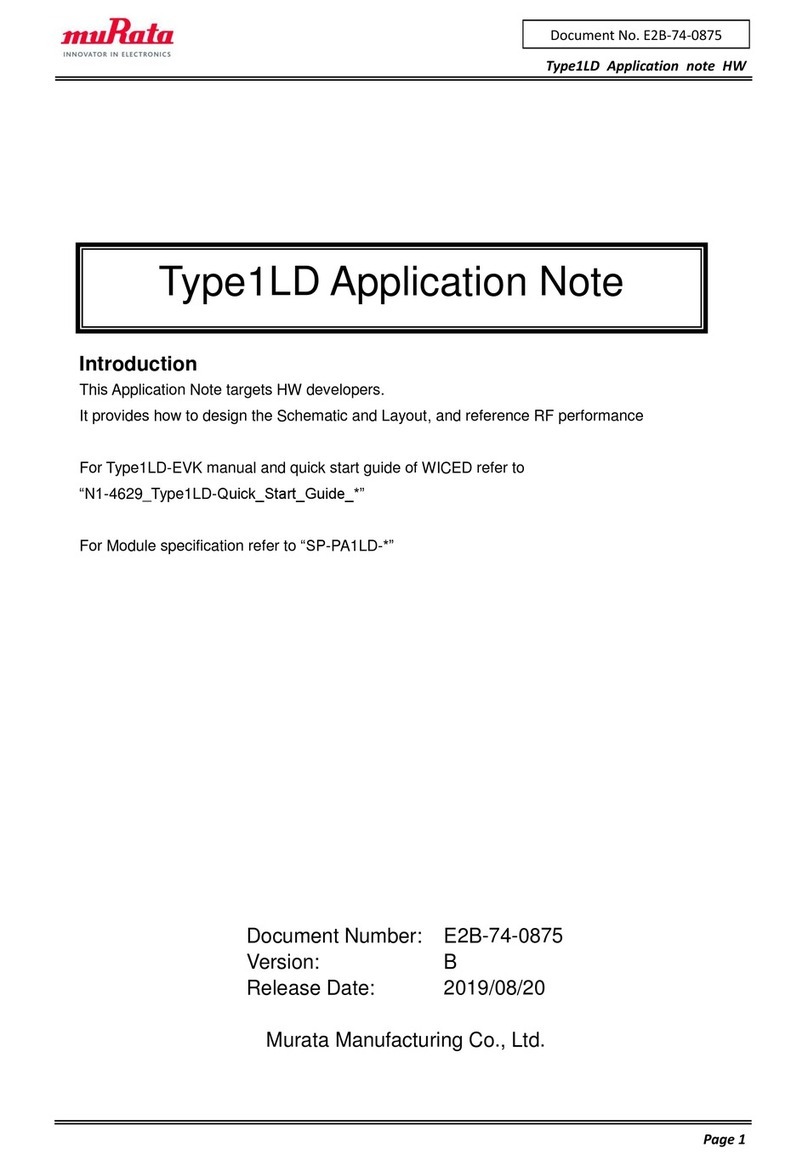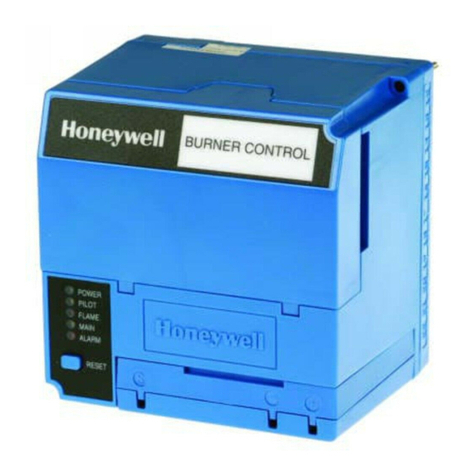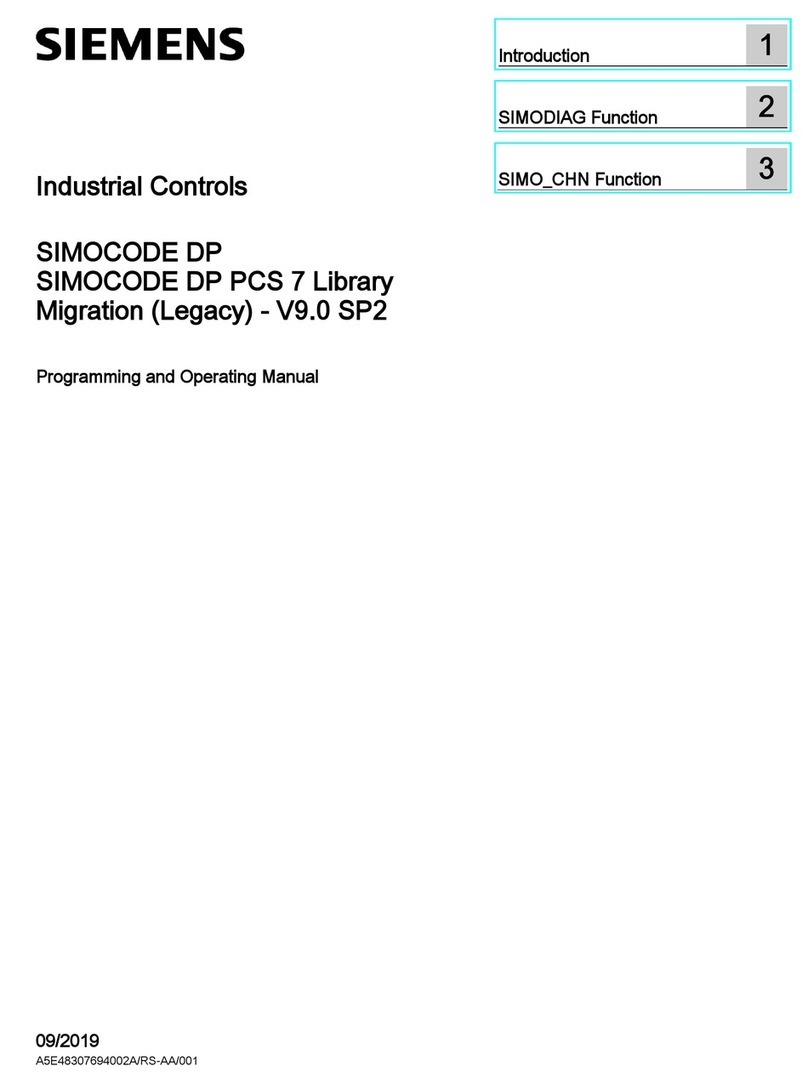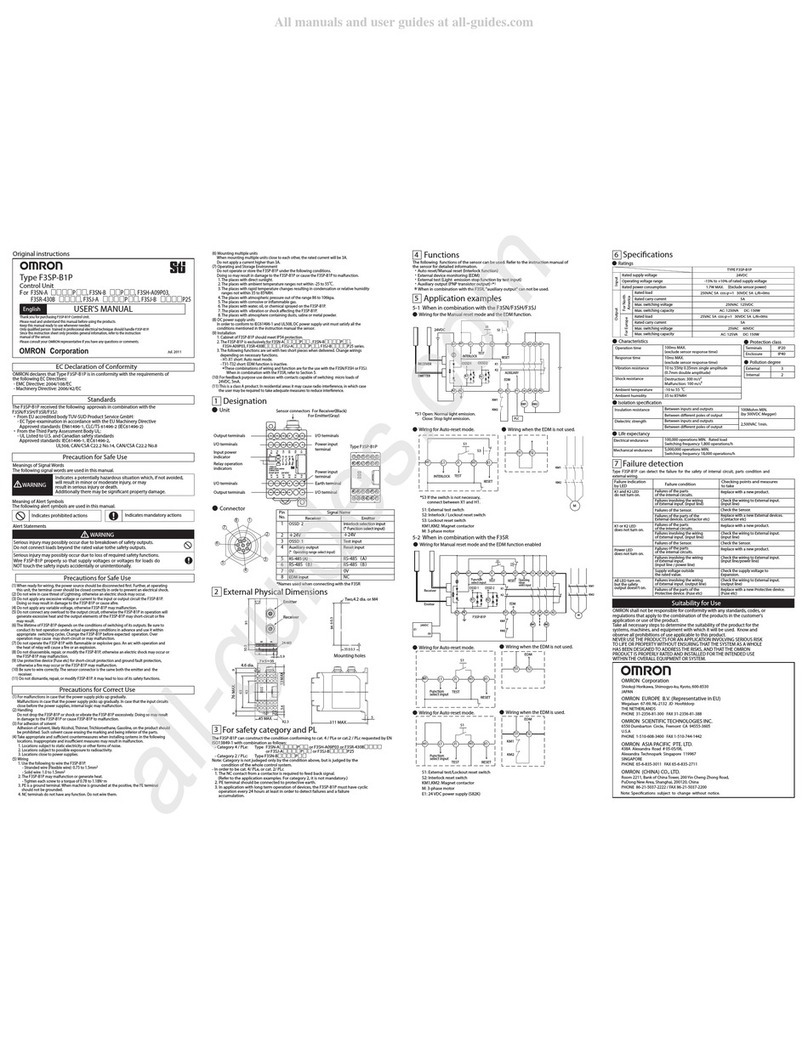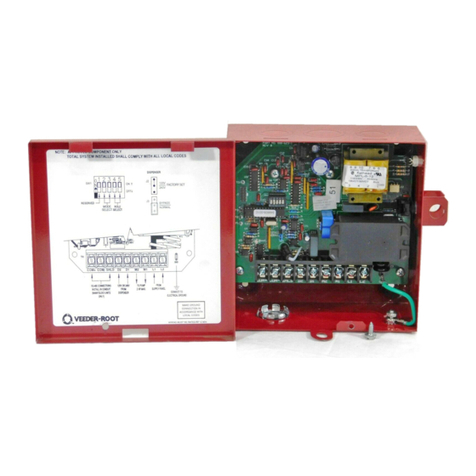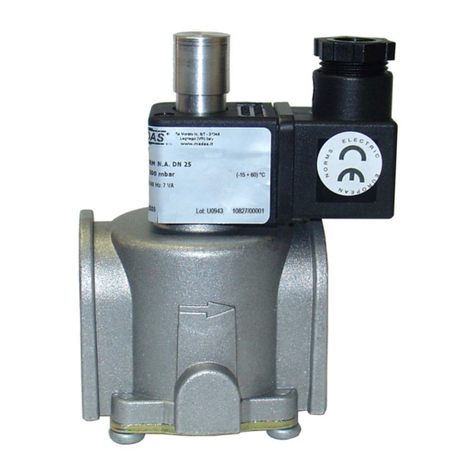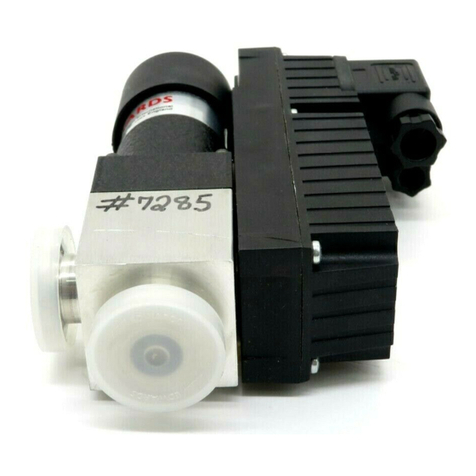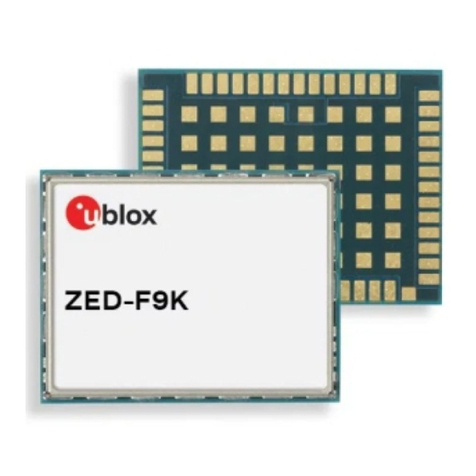Megmeet MC200-5AM User manual

1
MC200-5AM Analog I/O Module
User Manual
To reduce the chance of accident, please carefully read the operation
instructions and notes in this book prior to use. Only adequately trained
personnel shall install or operate this product. Strict compliance with the
safety rules in relevant industries, the operation instructions and safety
precautions provided in this book is required in equipment operation.
1 Port Description
1.1 Port
The extension port and user port of MC200-5AM are both protected by a
cover, as shown in Figure 1-1. Removing the covers reveals the extension
port and user port, as shown in Figure 1-2.
POWER
24V
RUN
EC20-5AM
Extension cable
Extension port cover
User port cover
262
25
POWER
24V
RUN
EC20 - 5 AM
102 4 6 8 2012 14 16 18
91 3 5 7 1911 13 15 17
V2+24V-
V1+
I 1+
24V+ FG VI2-
I2+ I3+
VI3-
V4+ I4+ VO+ IO+
User port Extension port
Extension cable
VI1- V3+ VI4- VIO-
Figure 1-1 MC200-5AM appearance Figure 1-2 Module ports
The extension cable connects MC200-5AM to the system, while the
extension port connects MC200-5AM to another extension module of the
system. For details on connection, See 1.2 Connecting Into System.
The user port of MC200-5AM is described in Table 1-1.
Table 1-1 MC200-5AM user port description
Terminal
Name
Description
Terminal
Name
Description
1
24V+
Analog power supply
24V+
11
V3+
CH3 voltage input
2
24V-
Analog power supply
24V-
12
I3+
CH3 current input
3
FG
Shielding ground
13
VI3-
CH3 common GND
4
PG
Protection ground
14
V4+
CH4 voltage input
5
V1+
CH 1 voltage input
15
VI4-
CH4 common GND
6
I1+
CH 1 current input
16
I4+
CH4 current input
7
VI1-
CH1 commond GND
17
·
NC
8
V2+
CH2 voltage input
18
VO+
Voltage output
9
VI2-
CH2 commnd GND
19
VIO-
Output channel
common GND
10
I2+
CH2 current input
20
IO+
Current output
Note: An input channel cannot receive both voltage signals and current
signals at the same time. If you intend to use a channel for current
measurement, short its voltage input terminal and current input terminal.
1.2 Connecting Into System
Through the extension cable, you can connect MC200-5AM to MC200 series
basic module or other extension modules. While through the extension port,
you can connect other MC200 series extension modules to MC200-5AM. See
Figure 1-3.
Basic module Extension module
Removing extension port cover
before connection
Extension cable
Figure 1-3 Connecting into system
1.3 Wiring
Figure 1-4 shows the wiring of the user port.
I1+ CH1
24 V+
24 V -
DC /DC
converter AGND
+5V
-5 V
PGND
EC 20 -5AM
24 Vdc ± 10%
60mA
V1+
VI 1-
FG
AGND
250
130K
130K
390 K
390 K
AGND
Current input
I4+ CH4
V4+
VI 4-
FG
AGND
250
130K
130K
390 K
390 K
AGND
Voltage input
①
②
②
③
①
Load CHO
IO+
VO+
VIO -
AGND
①
②
④
⑤
⑨
⑥
⑦⑧
Figure 1-4 Wiring of MC200-5AM user port
The circled 1 ~ 9 stands for the nine points to be observed during wiring.
1. It is recommended to use shielded twisted pair for the analog input and
output and separate them from power cables and any cable that may
generate EMI.
2. If the I/O signal has electric noise or voltage fluctuation, it is advisable to
connect a smoothing capacitor (0.1µF ~ 0.47µF/25V).
3. If strong EMI exists, connect the FG terminal to the PG terminal.
4. Each load of the PLC should be grounded separately.
5. If a channel is used for current input, short its voltage input terminal and
current input terminal.
6. Shorting the voltage output terminals or connecting current load to voltage
output terminals may damage MC200-5AM.
7. Properly ground the module’s PG terminal.
8. The basic module’s 24Vdc auxiliary power or other qualified external
power supply can be used as the power source of the module’s analog
circuit.
9. Do not use the NC terminal.
2 Indices
2.1 Power Supply
Table 2-1 Power supply
Item
Description
Analog circuit
24Vdc (-15%~20%), maximum allowable ripple voltage
5%, 90mA (from basic module or external power supply)
Digital circuit
5Vdc, 50mA (from basic module)
2.2 Performance
Table 2-2 Performance
Item
Index
Conversion
speed
AD conversion
15ms/channel (normal)
8ms/channel (high speed)
DA conversion
6ms/channel (max.)
Analog
input
Voltage
-10 ~ 10Vdc (input impedance 200kΩ)
Warning: this module may be damaged if
the input voltage exceeds ±15Vdc
Current
-20~20mA (input impedance 250Ω)
Warning: this module may be damaged if
the input current exceeds ±32mA
Analog
output
Voltage
-10~10Vdc (external load impedance ≥ 2kΩ)
Current
0~20mA (external load impedance ≤ 520Ω)
Digital output
Default: -2000 ~ 2000
Setting range: -10000 ~ 10000
Digital input
Default: -2000 ~ 2000
Setting range: -10000 ~ 10000
Resolution
Voltage input
5mV
Current input
10µA
Voltage output
5mV
Current output
10µA
Accuracy
Analog input
±1% of full range
Analog output
±1% of full range

2
Item
Index
Isolation
Between analog circuit and digital circuit:
photocoupler. Between analog circuit and input
24Vdc power: internal isolation. Between
analog channels: none
2.3 Buffer Memory
MC200-5AM exchanges data with the basic module through Buffer Memory
(BFM). The basic module uses TO command to write data into the BFM of
MC200-5AM to configure the status of MC200-5AM. It also uses TO
command to write in DA conversion input data. It uses FROM command to
read AD conversion result and other data from the BFM of MC200-5AM.
Table 2-3 describes the contents of the BFM of MC200-5AM.
Table 2-3 BFM contents
BFM
Contents
Description and default
Property
#000
CHO channel data
Output channel
RW
#100
Average value of CH1
Input channel
R
#101
Average value of CH2
Input channel
R
#102
Average value of CH3
Input channel
R
#103
Average value of CH4
Input channel
R
#200
Current value of CH1
Input channel
R
#201
Current value of CH2
Input channel
R
#202
Current value of CH3
Input channel
R
#203
Current value of CH4
Input channel
R
#300
Module error state word
R
#400
Initialization
0
RW
#500
Setting change enabling
1 (enabled)
RW
#600
Input channel mode word
0x0000
RW
#650
Output channel mode word
0x0000
RW
#700
Average sampling times of CH1
8
RW
#701
Average sampling times of CH2
8
RW
#702
Average sampling times of CH3
8
RW
#703
Average sampling times of CH4
8
RW
#800
Input characteristic setting
confirmation
0x0000
RW
#801
Output characteristic setting
confirmation
0x0000
RW
#900
CHO-D0
0 (output mode 0)
RW
#901
CHO-A0
0 (output mode 0)
R
#902
CHO-D1
2000 (output mode 0)
RW
#903
CHO-A1
10000 (output mode 0)
R
#904
CH1-D0
0 (input mode 0)
RW
#905
CH1-A0
0 (input mode 0)
R
#906
CH1-D1
2000 (input mode 0)
RW
#907
CH1-A1
10000 (input mode 0)
R
#908
CH2-D0
0 (input mode 0)
RW
#909
CH2-A0
0 (input mode 0)
R
#910
CH2-D1
2000 (input mode 0)
RW
#911
CH2-A1
10000 (input mode 0)
R
#912
CH3-D0
0 (input mode 0)
RW
#913
CH3-A0
0 (input mode 0)
R
#914
CH3-D1
2000 (input mode 0)
RW
#915
CH3-A1
10000 (input mode 0)
R
#916
CH4-D0
0 (input mode 0)
RW
#917
CH4-A0
0 (input mode 0)
R
#918
CH4-D1
2000 (input mode 0)
RW
#919
CH4-A1
10000 (input mode 0)
R
#2000
AD conversion speed switchover
0 (15ms/CH)
RW
#2100
Channel reset
0x0000; 1: Reset
RW
#4000
Low word of module use time
0
R
#4001
High word of module use time
0
R
#4094
Module software version
0x1000
R
#4095
Module ID
0x3142
R
Explanation:
1. CH1 stands for channel 1; CH2, channel 2; CH3, channel 3, and so on.
2. Property explanation: R means read only. An R element cannot be written.
RW means read and write. Reading from a non-existent element will get 0.
3. Status information of BFM#300 is shown in Table 2-4.
Table 2-4 BFM#300 status information
Bit status of
BFM #300
ON (1)
OFF (0)
b0: error
b1 or b2 is ON, AD/DA conversion of
all channels stopped
No error
b1: deviation &
gain error
BFM channel characteristic
parameter abnormal or setting error
Deviation & gain
normal
b2: power
supply failure
24Vdc power supply failed
Power supply
normal
b3: hardware
fault
AD converter hardware faulty
Hardware normal
b10: digital
range error
1. Digital output after AD conversion
outside the range of -2048 ~ 2047;
2. Digital input for DA conversion
outside specified range
Digital input/output
value normal
b11: average
sampling error
Average sampling outside the range
of 1 ~ 4096 (use default 8)
Average normal
(between 1 ~ 4096)
4. BFM#400: module initialization command. Setting BFM#400 to 1 will
restore all module settings to default values.
10. BFM#500: I/O characteristics setting change enable. Setting BFM#500 to
0 inhibits change in I/O characteristics settings. Setting it to 1 allows change
in I/O characteristics settings. The setting of BFM#500 will not change after
module restart following power restoration.
3. BFM#600: input mode selection, used to set the input modes of CH1 ~
CH4. See Figure 2-1 for their correspondence.
×4
0x×3×2×1
Input mode for CH1
600#
Input mode for CH2
Input mode for CH3
Input mode for CH4
Figure 2-1 Mode setting element vs. channel
The exact meaning of the X in the channel mode is shown in Table 2-5.
Table 2-5 Meaning of X in input mode
Value of X
Information
0
-10V ~ +10V voltage input mode
1
-5V ~ 5V voltage input mode or -20 ~ 20mA current input
mode
3
Channel closed
For example, if #600 is written as ‘0x0103’, the setting will be like this:
Input channel 1 closed;
Input channel 3 mode: -5V ~ +5V or –20mA ~ 20mA (note the wiring
difference in voltage and current, see 1.3 wiring);
Input CH2, and CH4 mode: -10V ~ 10V.
7. BFM#650: output mode selection, controlled by the X1 in the 4-bit
hexadecimal number H×4×3×2×1. The meaning of ×is as follows:
Table 2-6 Meaning of X in output mode
Bit
Value
Information
X1
0
-10V ~ +10V voltage output mode
1
0 ~ 20mA current output mode
2
4 ~ 20mA current output mode
X2~ X4
Reserved
8. BFM#700 ~ BFM#703: average sampling times setting; setting range:
1~4096. Default: 8 (normal speed); choose 1 if high speed is needed.
9. BFM#2000: AD conversion speed setting. 0: 15ms/channel (normal speed);
1: 8ms/channel (high speed). Setting BFM#2000 will restore BFM#1 ~ #2 to
the default, which should be noted in programming. If necessary, you can set
BFM#700 ~ #703 again after changing the conversion speed.
10. BFM#800, BFM#801: channel characteristics setting confirmation. After
setting the channel characteristics (from BFM#900 to BFM#919), you need to
write 1 into the corresponding hexadecimal data bit to validate the setting and
thereby change the channel’s output characteristics. This command will be
cleared automatically after being executed correctly.
11. BFM#900 ~ BFM#919: channel gain and deviation settings, which are set
using two-point method. D0 and D1 represent channel digital output, A0 and
A1 represent actual channel input. A0 and A1 are in mV or µA, and each
channel occupies 4 words. To simplify the setting operation without affecting
functions, A0 and A1 are respectively fixed to 0 and the maximum value.

3
Users cannot change them.
Note: If the channel input is current signal (-20mA~20mA), the present
channel mode should be set to 1. Because the channel’s internal
measurement is based on voltage signal, current signals should be converted
into voltage signals (-5V~5V) by the 250Ω resistor at the current input
terminal of the channel. The A1 in the channel’s characteristics setting is still
in mV unit, that is to say, 5000mV (20mA × 250Ω = 5000mV).
12. BFM#4094: module software version, which can be read with the FROM
command.
13. BFM#4095: module ID. ID of MC200-5AM is 0x3142. The user program in
PLC can use this ID to identify the module before transceiving data.
3 Characteristic Setting
3.1 Setting Analog Input Channel
Characteristics
The input channel characteristic of MC200-5AM is the linear relationship
between the channel’s analog input A and digital output D. It can be set by
the user. Each channel can be considered as the model shown in Figure 3-1.
As it is of linear characteristic, the channel characteristic can be defined by
just two points: P0 (A0, D0) and P1 (A1, D1), where D0 is the channel’s
digital output corresponding to analog input A0, and D1 is the channel’s
digital output corresponding to analog input A1.
Channel D
Digital output
A
Analog input
Channel model
D1
A (mV)
Channel characteristic setting
D0
A0 A1
P1
P0
D
Figure 3-1 MC200-5AM input channel characteristic
To simplify the operation process without affecting functions, A0 and A1 are
respectively fixed to 0 and the maximum value in the present mode. That is to
say, in Figure 3-1, A0 is 0 and A1 is the maximum analog input in the present
mode. A0 and A1 will change according to the mode when BFM#600 is
changed. Users cannot change their values.
If you just set the channel mode (BFM#600) without changing the D0 and D1
of each channel, the channel characteristic vs. mode should be as shown in
Figure 3-2. The A in Figure 3-2 is default.
5000
2000
- 2000
0
A (mV )
D
B. Mode 1
- 5000
10000
2000
- 2000
0
A ( mV )
D
A. Mode 0
(default)
-10000
Figure 3-2 Characteristics vs. modes without changing D0 and D1
You can change the channel characteristic by changing D0 and D1. The
setting range of D0 and D1 is –10,000 ~ 10,000. If the setting is outside this
range, MC200-5AM will not accept it, but maintain the original valid setting.
Figure 3-3 provides for your reference an example of changing channel
characteristics.
5000
2000
- 3000
0A( mV)
D
- 5000
10000
10000
- 10000
0A ( mV)
D
-10000 P0
P1
- 500 1000
P1
P0
A
B
Mode 0, D0 = 0, D1 = 10,000
Mode 1, D0 = -500, D1 = 2000
Analog input 10V outputs 10,000
Analog input 5V (or 20mA) outputs 2000
Analog input 0V outputs 0
Analog input 1V (or 4mA) outputs 0
Analog input -10V outputs -10,000
Analog input -5V (or -20mA) outputs -3000
Figure 3-3 Changing input channel characteristics
3.2 Setting Analog Output Channel
Characteristics
The analog output channel characteristic of MC200-5AM is the linear
relationship between the channel’s analog output A and digital input D. It can
be set by the user. Each channel can be considered as the model shown in
Figure 3-4. Because it is of linear characteristic, the channel characteristic
can be defined by just two points: P0 (A0, D0) and P1 (A1, D1), where D0 is
the channel’s digital input corresponding to analog output A0, and D1 is the
channel’s digital input corresponding to analog output A1.
D1
A
Channel characteristic
D0
A0
A1
Channel
D
Digital input
A
Analog output
P1
P0
Channel model
D
Figure 3-4 MC200-5AM output channel characteristic
To simplify the operation process without affecting functions, A0 and A1 are
respectively fixed to 0 and the maximum value in the present mode. That is to
say, in Figure 3-4, A0 is 0 and A1 is the maximum analog output in the
present mode. A0 and A1 will change according to the mode when BFM#650
is changed. Users cannot change their values.
If you set the channel mode (BFM#650) without changing D0 and D1 of each
channel, the channel characteristic vs. mode should be as shown in Figure
3-5. The A in Figure 3-5 is default.
B. Mode 1: 0 ~ 20mA
10000
2000
0
A. Mode 0: -10V ~ 10V
(default)
-2000
A ( mV )
D
- 10000
20000
2000
0- 2000
A ( uA )
D
20000
2000
0
C. Mode 2: 4-20mA
-2000
A ( uA)
D
- 500
4000
Figure 3-5 Characteristics vs. modes without changing D0 and D1
You can change the channel characteristic by changing D0 and D1. The
setting range of D0 and D1 is –10,000 ~ 10,000. If the setting is outside this
range, MC200-5AM will not accept it, but maintain the original valid setting.
Figure 3-6 provides for your reference an example of changing channel
characteristics.
10000
10000
0
- 10000
A ( mV )
D
-10000
20000
2000
0
-2000
A ( uA )
D
20000
10000
0-10000
A (uA)
D
-2500
4000
10000
A
B
C
Mode 0, D0 = 0, D1 = 10,000
Mode 1, D0 = -2000, D1 =
2000
Mode 2, D0 = -2500, D1 =
10000
Input 10,000 outputs 10V
Input 2000 outputs 20mA
Input 10000 outputs 20mA
Input 0 outputs 0V
Input 0 outputs 10mA
Input 0 outputs 4mA
Input –10,000 outputs –10V
Input –2000 outputs 0mA
Input –2500 outputs 0mA
Figure 3-6 Changing output channel characteristics
4 Application Example
4.1 Basic Application
Example: The MC200-5AM module address is 1 (for the addressing of
extension modules, refer to the MC200 Series PLC User Manual). Use its
channels 1, and 3 for voltage input (-10V~10V), and CH2 for current input
(-20~20mA). Close CH4. Set the average sampling times to 4, and use data
registers D1, D2, and D3 to receive the average value; set output channel to
mode 0 and for 10V voltage output.

4
4.2 Changing Characteristics
Example: The MC200-5AM module address is 3 (for the addressing of
extension modules, refer to the MC200 Series PLC User Manual). Set the
average sampling times to 4. The example below can change the
characteristics as shown in Figure 3-3. To be specific, CH1 realizes A in
Figure 3-3, and CH2 realizes B. Close CH3 and CH4. Use data registers D1
and D2 to receive the average value. The output channel realizes the A
characteristic in Figure 3-6. Output voltage: 10V.
5 Operation Inspection
5.1 Routine Inspection
1. Check that the wiring of analog input meets the requirements (see 1.3
wiring).
2. Check that the extension cable of MC200-5AM is properly inserted in the
extension port.
3. Check that the 5V and 24V power supplies are not overloaded. Note: The
digital circuit is powered by the basic module through extension cable.
4. Check the application, make sure the operation method and parameter
range are correct.
5. Set the MC200 basic module to RUN state.
5.2 Inspection Upon Fault
In case of abnormality, check the following items:
●The status of the POWER indicator
ON: the extension cable is properly connected;
OFF: check the extension cable connection and the basic module.
●The wiring of analog input
●The status of the 24V indicator
ON: 24Vdc power supply normal;
OFF: 24Vdc power supply possibly faulty, or MC200-5AM faulty.
●The status of the RUN indicator
Flash quickly: MC200-5AM in normal operation;
Flash slowly or OFF: Check the information in BFM#300.
Notice
1. The warranty range is confined to the PLC only.
2. Warranty period is 18 months, within which period Megmeet Network
Power conducts free maintenance and repairing to the PLC that has any fault
or damage under the normal operation conditions.
3. The start time of warranty period is the delivery date of the product, of
which the product SN is the sole basis of judgment. PLC without a product
SN shall be regarded as out of warranty.
4. Even within 18 months, maintenance will also be charged in the following
situations:
Damages incurred to the PLC due to mis-operations, which are not
in compliance with the User Manual;
Damages incurred to the PLC due to fire, flood, abnormal voltage,
etc;
Damages incurred to the PLC due to the improper use of PLC
functions.
5. The service fee will be charged according to the actual costs. If there is any
contract, the contract prevails.
6. Please keep this paper and show this paper to the maintenance unit when
the product needs to be repaired.
7. If you have any question, please contact the distributor or our company
directly.
Shenzhen Megmeet Control Technology Co.,Ltd
Address: 5th Floor,Block B,Ziguang Information Harbor, Langshan Rd,
Science& Technology Park, Nahshan District, Shenzhen
Homepage: www.megmeet.com
All rights reserved. The contents in this document are subject to change
without notice.
Other Megmeet Control Unit manuals
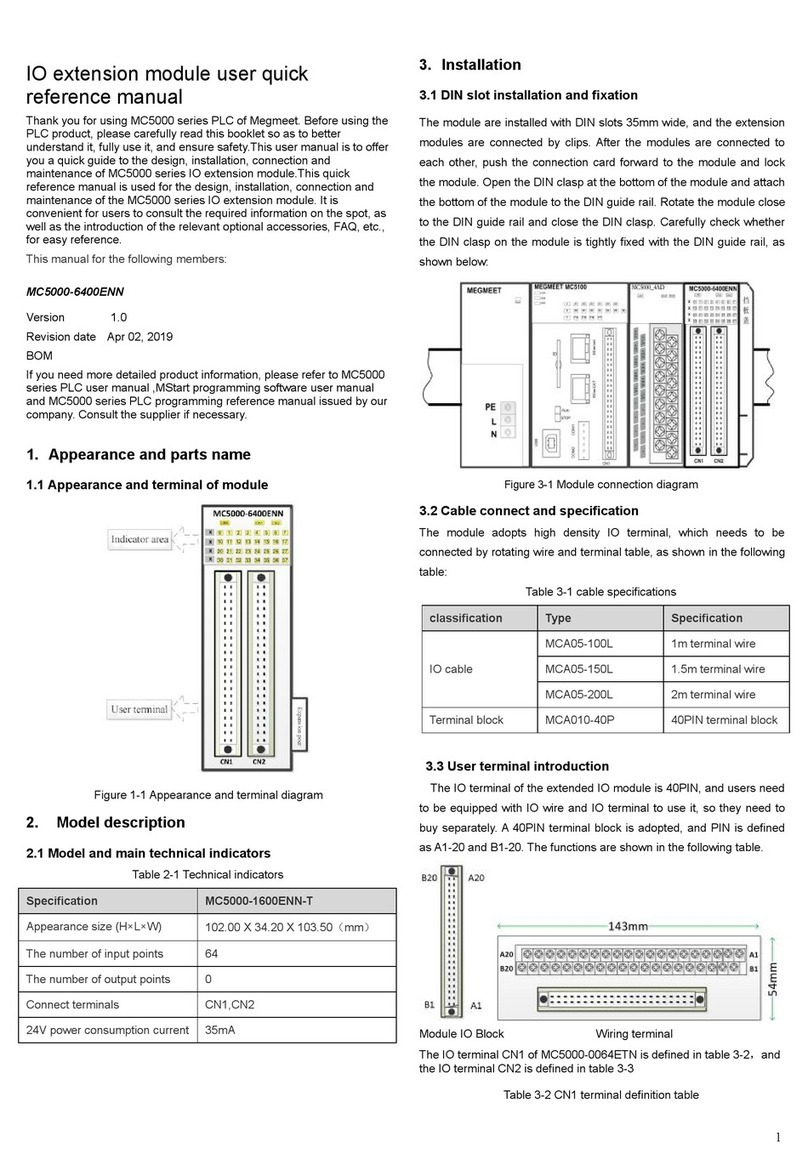
Megmeet
Megmeet MC5000 Series User manual

Megmeet
Megmeet MC5000 Series User manual
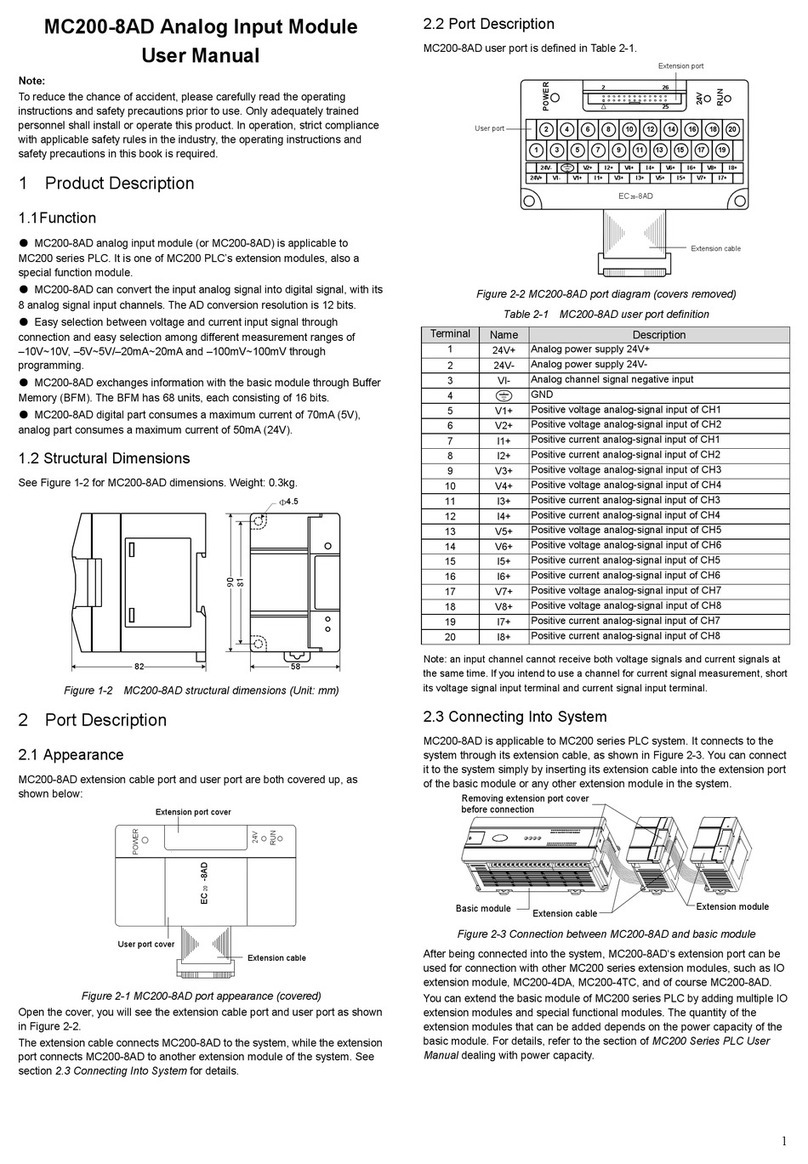
Megmeet
Megmeet MC200-8AD User manual
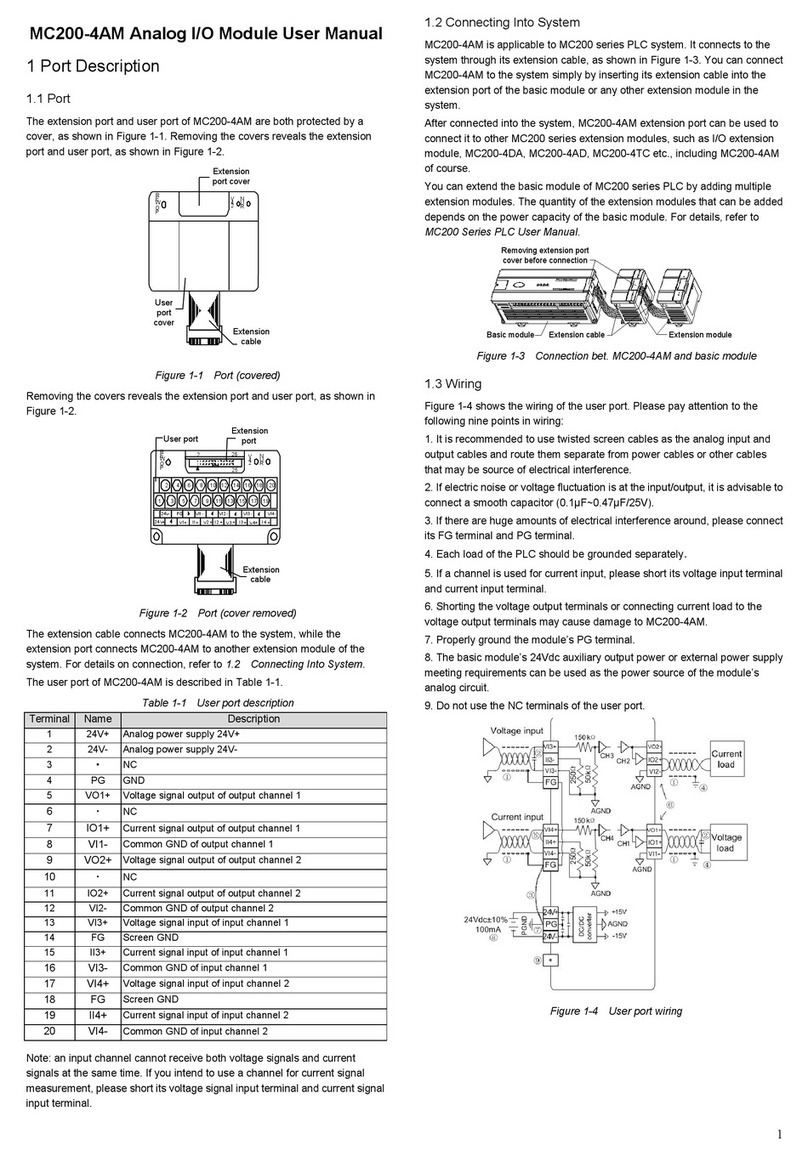
Megmeet
Megmeet MC200-4AM User manual

Megmeet
Megmeet MC100 Series User manual
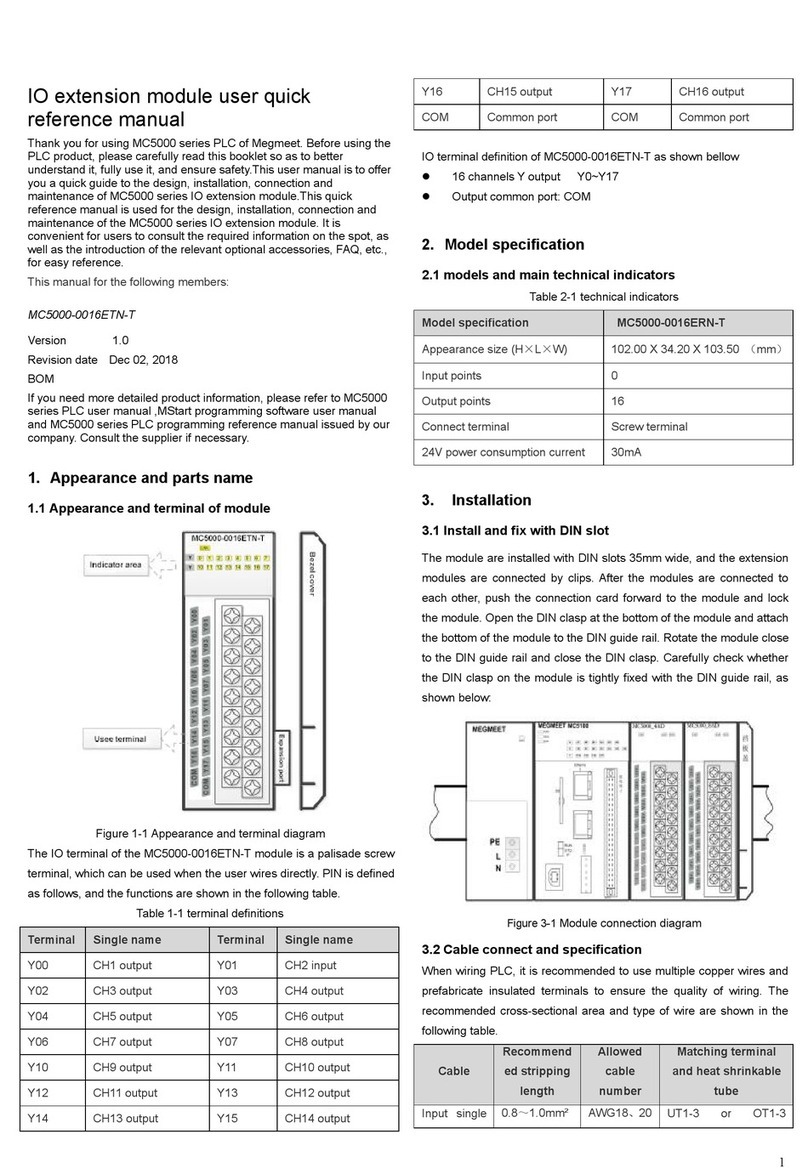
Megmeet
Megmeet MC5000 Series User manual

Megmeet
Megmeet MC5000 Series User manual

Megmeet
Megmeet MC5000 Series User manual
Popular Control Unit manuals by other brands
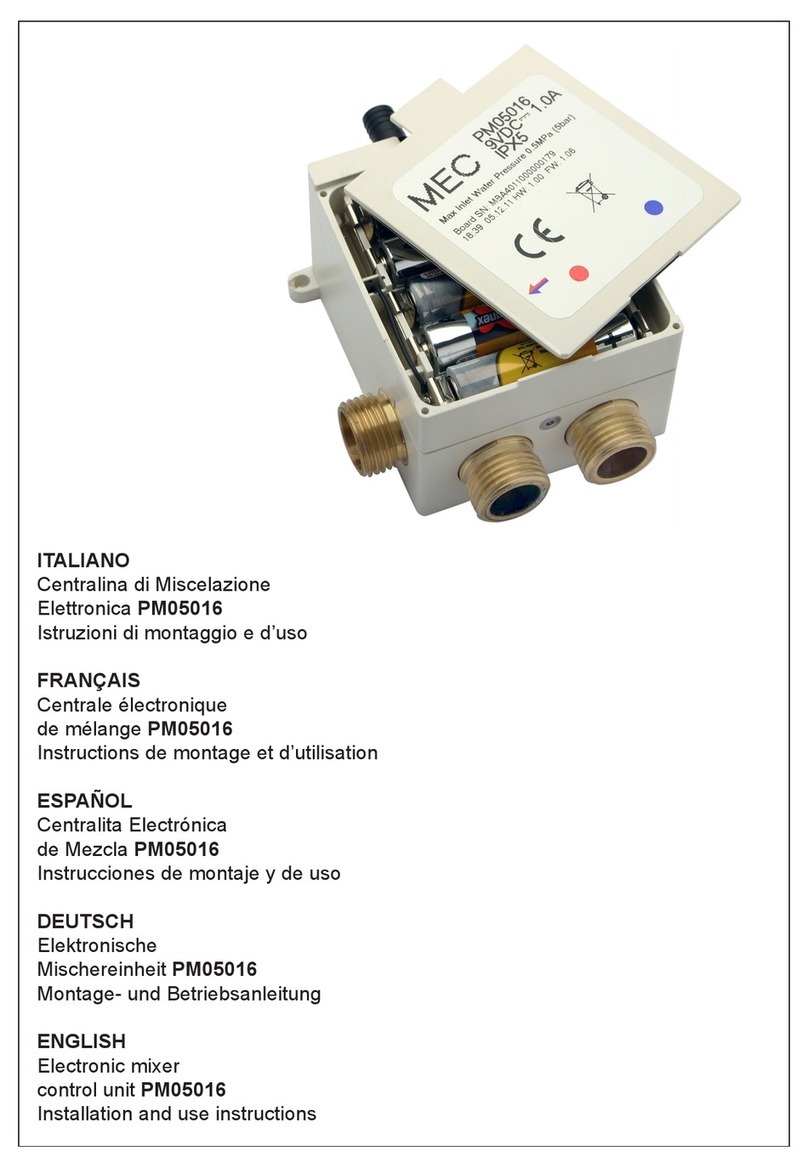
Whirlpool
Whirlpool PM05016 Installation and use instructions

oventrop
oventrop AV9 operating instructions
BIFFI
BIFFI ICON3000 Series Installation, operation and maintenance manual

Transition Networks
Transition Networks CWDM-MXxxLCR-B Series user guide
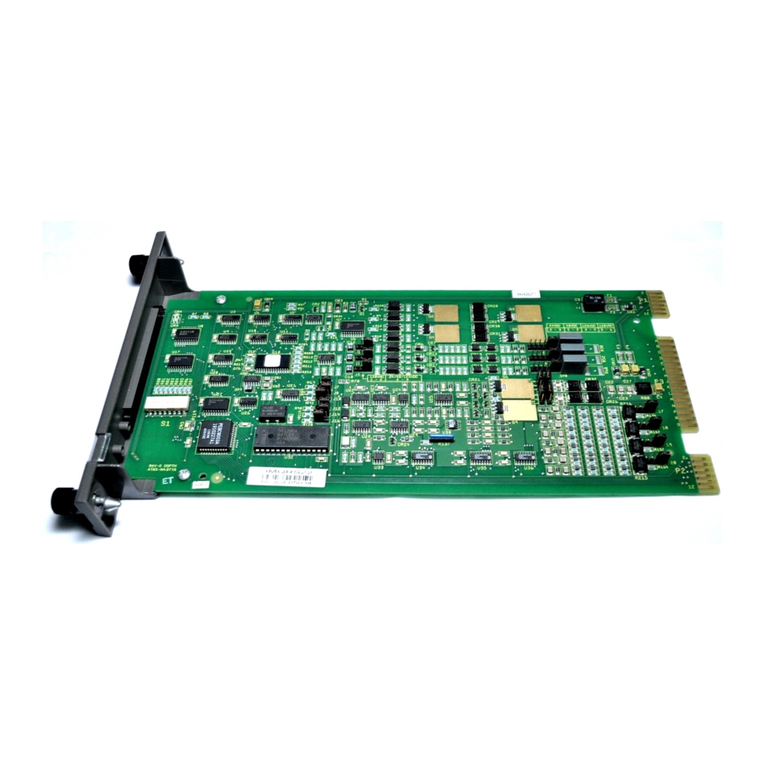
ABB
ABB Symphony Harmony Series Instruction
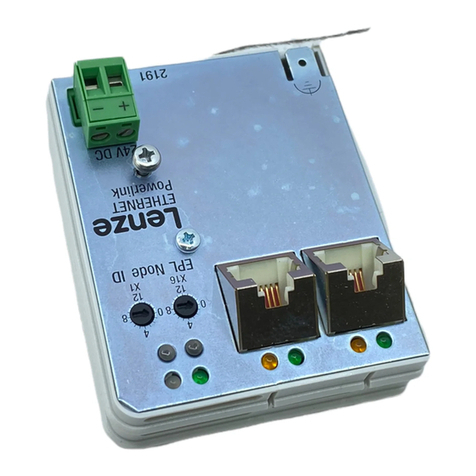
Lenze
Lenze EMF2191IB Mounting instructions
